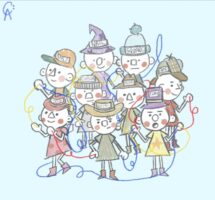
The Paris climate agreement cements the fact that the world will transition to zero emissions and in so doing will rapidly decarbonise. Implementing the Paris agreement will require a paradigm shift in the way that energy is produced and consumed, affecting national security, energy security as well as the global production of goods and services.
We will see the transition from what we call the Fossil Energy Era to the Renewable Energy Era. As this transition occurs, countries with vast, cheap, reliable renewable energy will have a comparative advantage. Australia just happens to be in the top 3 of a list of countries with those qualities. Australia also meets other key criteria for renewable energy superpower status – it is stable geopolitically, has strong infrastructure and is considered a sound place to invest.
These are some of the findings of the latest report by climate think tank Beyond Zero Emissions – Renewable Energy Superpower – being launched in Sydney on 4 April with a keynote presentation by Shadow Minister for Climate Change, the Hon Mark Butler MP.
The opportunities for Australia in this transition to zero emissions are enormous. Transitioning from the fossil fuel era to the renewable energy era will bring a range of economic opportunities. In a decarbonized world, energy intensive trade exposed industries will be looking for the resources that renewable energy superpowers have to offer. The shifting global economics of renewable energy will ultimately precipitate a migration to Australia and other renewable energy superpowers of energy intensive trade exposed industries, industries that are currently generating $2.3 trillion in annual trade value.
According to projections by the International Energy Agency, the power sector, dominated by renewables and network infrastructure, and energy efficiency is expected to account for the majority of energy investment over the next 20 years. In these scenarios, coal accounts for only 1-2 per cent of future investment. US$28 trillion is expected to be invested in renewable energy and energy efficiency equipment by 2035, more than coal, oil and gas development combined.
Australia has an estimated economically demonstrated wind and solar resource of 5054 exajoules – this is only 4 per cent of Australia’s total renewable energy resource yet is 75 per cent greater than all of Australia’s coal, gas, oil and uranium resources combined. We’ve already demonstrated how Australia can make the shift to 100% renewable energy. Britain has already done the same as has the US and so have 10 European countries and France. This list grows each day. Cities and regions around the world have announced transitions to 100% renewable energy – Vancouver, Copenhagen and our own Adelaide, Melbourne Byron and Sydney are amongst dozens in the race to 100% renewables or zero emissions.
There are other advantages for Australia in this transition. The economic risks in staying attached to fossil fuels are only increasing. There is an obvious and disappearing fossil energy advantage as the world decarbonises. Indications are of a strong slowdown, including for Australian coal – China has reduced its coal consumption by 2 per cent over the past year and a half and coal imports are down by 35 per cent year on year. China has declared no new coal mines will be opened, while India has announced it will stop all coal imports within 3yrs. Japan and South Korea have announced aggressive renewable energy targets. These 4 countries alone represent over 90 per cent of Australian coal exports. Australia risks a $100 billion hole in its budget by 2030 with the changes already underway.
For the Turnbull government to live up to its statements made at the Paris climate conference it should immediately commence zero emissions transition planning consistent with the Paris agreement. Similarly business can start planning for the transition including factoring longer-term implications of emission reductions into decisions to avoid investment lock-in and potential stranded assets. Australia can be engaging with its trading partners and emerging Asian nations on developing joint decarbonisation programs. Australian innovation policy should be maximising the opportunity for renewable energy, energy efficiency investment and both multilateral and bilateral trade agreements should include emission reduction objectives.
The global transition to 100 per cent renewables is an inevitable consequence of meeting the Paris agreement. The growing demand for clean energy and energy efficiency will mean that businesses will flourish who firstly; supply the components and services that make up the ‘platform’ for the new energy systems, and secondly; supply and service the ‘new energy solutions’ that ‘use’ the new energy system – electric vehicles, rooftop power generation, heat pumps for water and space heating, utility scale renewables, thermal and chemical energy storage, microgrids and smart infrastructure. These are the businesses that will thrive in Australia’s Renewable Energy Superpower.
Stephen Bygrave is CEO of climate think tank Beyond Zero Emissions






